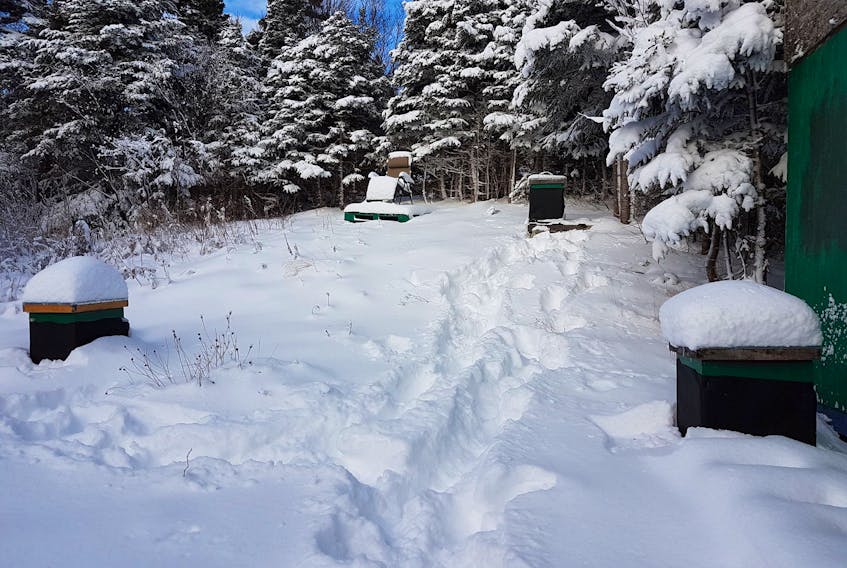There have been some cold, hard facts of life for bees in Newfoundland and Labrador this winter, according to a local beekeeper.
The unrelenting windchills and minus double-digit “feels-like” temperatures that persisted through February have been a huge worry, said Phillip Cairns, a hobby beekeeper in Flatrock.
The bees need temperatures of between 5 C and 10 C to go out for cleansing flights — to stretch their wings and relieve themselves, explained Cairns, who has been a backyard beekeeper since 2010.
“It’s just been unusually windy for most of February. Usually it’s not so consistently and persistently cold with the high winds we have had,” he said.
“The bees usually need a break every couple of weeks to stretch their wings.”
It’s heartbreaking, because he’s already seen some signs of possible dysentery around the hives — an inflammatory disease of the intestine.
If they have a hard winter, they will be slow to build up numbers for a viable hive in the summer and they won’t make enough honey, Cairns said.
“You need a strong spring to get a strong start, especially when in Newfoundland and Labrador springs are pretty lousy,” he said.
“Anything like this really knocks them back, moreso than any other place in North America.”
Usually there’s a break for them, but this has been the hardest winter for bees he’s seen since he began beekeeping.
Once dysentery sets in, the bees get weaker.
Another problem this winter is that the cold winds beating on the hives are cooling the interior. He has wrapped the hives, but it still means they have some difficulty moving around inside and getting to the honey, so they risk starving.
“That’s the hardest part of beekeeping in Newfoundland and Labrador. …. There are four or five months where they huddle in a ball trying not to freeze to death,” he said.
He hopes temperatures will go up soon.
“Bees know how to make the most of good weather,” Cairns said.
“With one warm day, they can stretch their wings, use the washroom, come back in and everything will be cool.”









